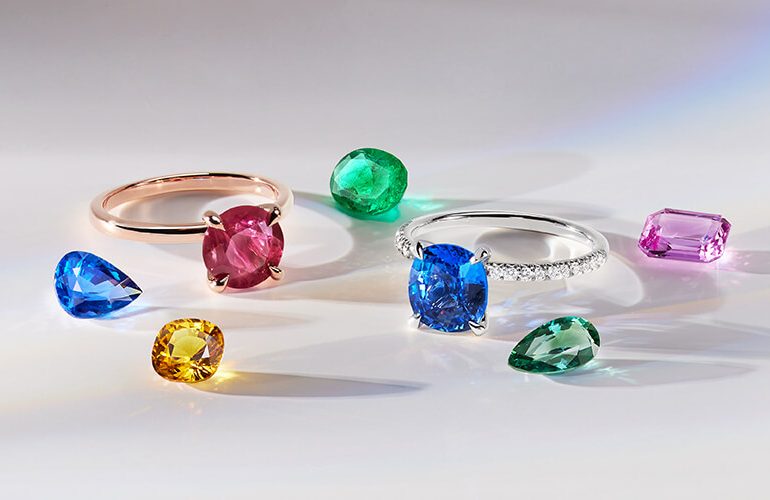
Introduction
Let’s face it—diamonds are forever, but they’re also forever expensive. With the market for alternative gemstones booming, more and more people are exploring diamond substitutes for their sparkle and savings. If you’re curious about what options are out there, why they’re worth considering, and how to pick the best one for you, you’re in the right place.
What Are Diamond Substitutes?
Definition of Diamond Substitutes
Diamond substitutes are gemstones that mimic the look of a diamond but come at a fraction of the cost. These alternatives can be natural or synthetic and offer a range of optical and physical properties that closely resemble diamonds.
History of Diamond Substitutes
The quest for diamond alternatives isn’t new. Even in ancient times, people sought out stones like quartz to imitate diamonds. Fast forward to the 20th century, and the development of synthetic gems like cubic zirconia revolutionized the jewelry market. Today, advanced technology gives us a plethora of high-quality substitutes.
Why Consider Diamond Substitutes?
Cost-Effectiveness
First off, let’s talk money. Diamonds are pricey, and not everyone wants to—or can—drop a fortune on a piece of jewelry. Diamond substitutes offer a glittering alternative that won’t break the bank. For the price of one diamond, you could get multiple pieces of beautiful, convincing alternatives.
Ethical Considerations
Ever heard of blood diamonds? The ethical issues surrounding diamond mining are significant, involving everything from human rights abuses to financing conflicts. Opting for a diamond substitute can be a more ethical choice, free from the murky waters of the diamond trade.
Environmental Impact
Mining diamonds isn’t exactly eco-friendly. It involves extensive land disruption and significant carbon emissions. Diamond substitutes, especially lab-grown options, offer a more sustainable choice, reducing the environmental footprint of your bling.
Popular Diamond Substitutes
Moissanite
Characteristics of Moissanite
Moissanite is a near-colorless gemstone known for its brilliant sparkle and fire. Its refractive index is higher than that of a diamond, meaning it can actually shine brighter.
Moissanite vs. Diamond
When it comes to hardness, moissanite ranks 9.25 on the Mohs scale, just below diamond. Visually, it’s tough to tell the difference, especially for the untrained eye. Plus, it’s way more affordable.
Choosing the Right Diamond Substitute for You
Budget Considerations
Your budget will likely play a significant role in your decision. Moissanite and cubic zirconia are generally more affordable, while lab-grown diamonds can be pricier but still cheaper than natural diamonds.
Occasion and Use
Think about how you’ll wear your jewelry. For everyday wear, you might want something more durable like moissanite or lab-grown diamonds. For occasional use, cubic zirconia might be perfectly fine.
Personal Preferences
At the end of the day, choose what you love. If you prefer the fiery sparkle of moissanite or the classic elegance of a white sapphire, go for it. Jewelry is a personal expression, so pick what resonates with you.
How to Care for Diamond Substitutes
Cleaning Tips
Keeping your diamond substitute sparkling is easy with regular cleaning. Use mild soap, warm water, and a soft brush. Avoid harsh chemicals that can damage the stone.
Storage and Maintenance
Store your jewelry in a soft pouch or lined jewelry box to prevent scratches. Regularly inspect your pieces for loose settings or damage.
Common Misconceptions About Diamond Substitutes
Durability Concerns
Many people worry that substitutes won’t last. While it’s true some are softer, with proper care, they can be just as enduring as diamonds.
Appearance Differences
Some think substitutes look fake. However, modern options are incredibly convincing. Most people won’t be able to tell the difference without a jeweler’s loupe.
The Future of Diamond Substitutes
Technological Advances
Technology is making substitutes better than ever. From improving the quality of lab-grown diamonds to creating more durable and brilliant moissanite, the future looks bright.
Market Trends
As more people become conscious of ethical and environmental issues, the demand for diamond substitutes is set to grow. This trend will likely drive even more innovation and variety in the market.
Conclusion
In the glittering world of gems, diamond substitutes offer a fabulous alternative to traditional diamonds. They’re affordable, ethical, and often indistinguishable from the real thing. Whether you’re looking for something that sparkles as bright as a diamond or something unique with its own charm, there’s a diamond substitute out there for you. So go ahead, explore your options, and find the perfect gem to add some sparkle to your life.





